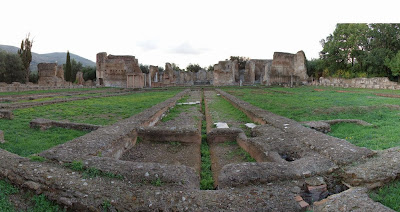(From THE MEMOIRS OF AN ANCIENT PRIEST by Ernest Gill)
THIS tale was told at the great Temple of Antinous at Rome under the most exalted Priest Nikias.
Nikias of Rome was the author of a famous inscription in Greek which addresses Antinous as NEOS HERMES the "New Hermes" who conveys the deceased through the portals of death into transcendent light. A great Antinoo-Hermeticist, Nikias had taught them much about the triumph of Antinous over death.
One day an old farmer lost his best stallion and went to Priest Nikias to ask for a miracle from Antinous to change his bad fortune, but Nikias told the farmer, "Who knows what is good and what is bad."
The next day the stallion returned bringing with him three wild mares. The farmer rushed back to praise Antinous for the miracle which brought such good fortune, but Priest Nikias simply said, "Who knows what is good and what is bad."
The following day, the farmer's son fell from one of the wild mares while trying to break her in and broke his arm and injured his leg. The farmer went to the temple in mourning to ask for prayers to reverse the bad fortune which had befallen his son.
But Priest Nikias only placed his hand on the farmer's shoulder and said, "Who knows what is good and what is bad."
The next day the army came to the farm to conscript the farmer's son for the Legions, but found him invalid and left him with his father.
The farmer rushed to the temple and prostrated himself before Priest Nikias, kissing the hem of his garment and saying over and over, "Who knows what is good and what is bad."








+by+Anton+von+Werner+(1877).jpg)


















